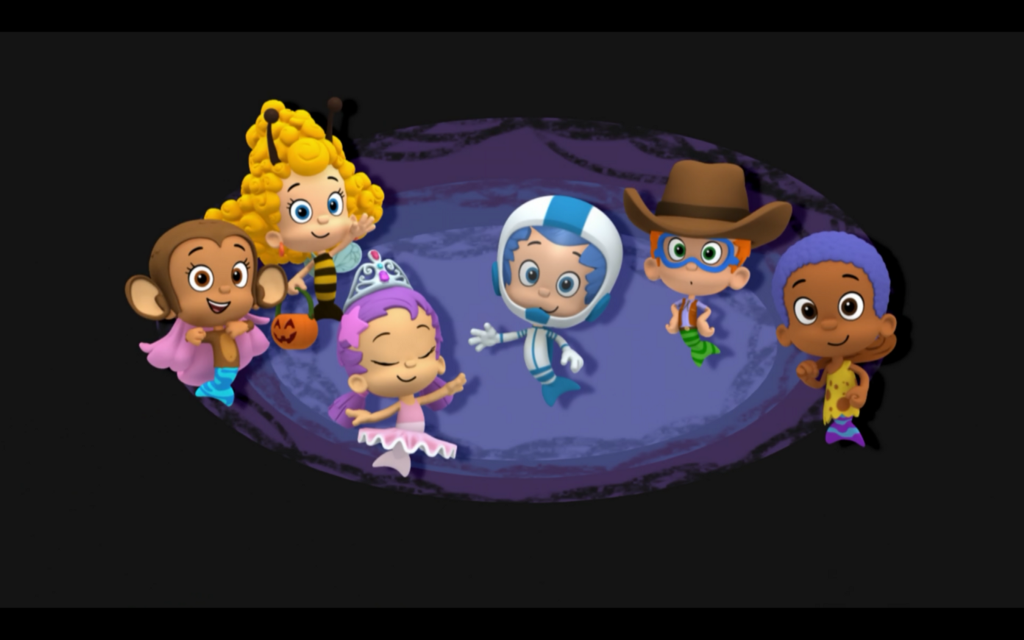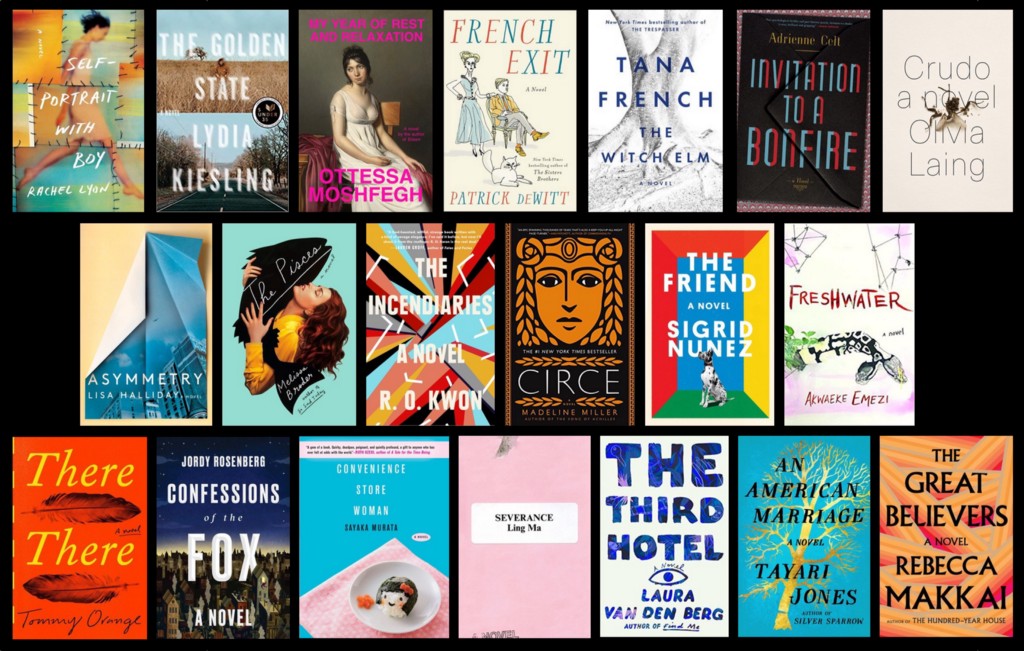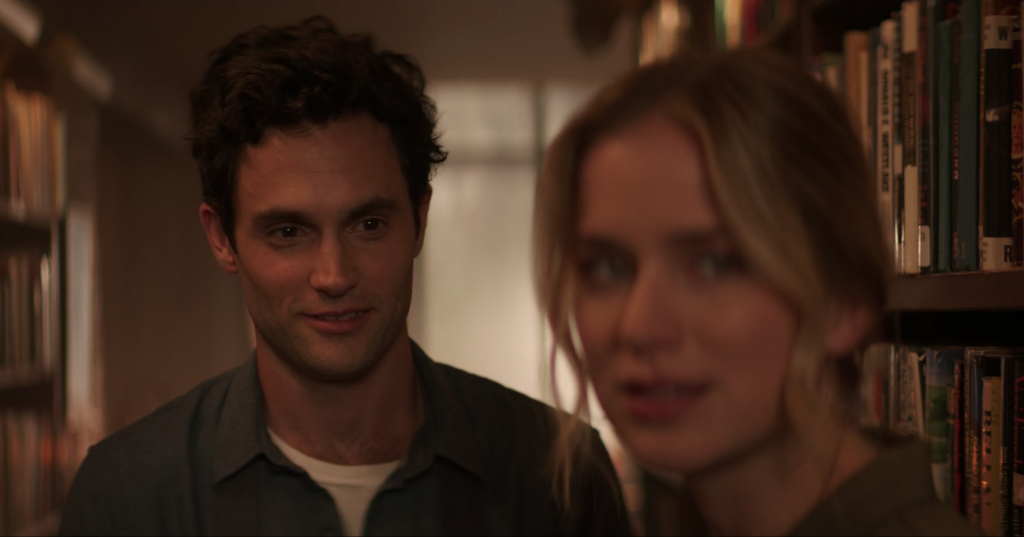Books & Culture
Processing Trauma by Overthinking Bubble Guppies
Imagining a backstory for my son’s favorite cartoon saved my sanity

It’s two in the morning, and my son wakes up howling. Jack’s maybe a year old. He’s in the midst of a whopper of an ear infection. As I take over for my wife and settle with him on the couch, I see why he hasn’t yet calmed down. The YouTube app on the TV is stuck on its loading screen.
“It’s okay, Jack,” I say. Then I start singing the theme song to Betty Boop: “Made of pen and ink, she can win you with a wink…”
Finally our playlist of pixelated Fleischer cartoons, both public domain and pirated, loads. Jack calms down enough to exit the Snot Cycle. (You know — discomfort leads to crying, leads to mucus, leads to more discomfort, leads to crying harder, and so on.)
Let’s ignore for a moment the fact that showing a child cartoons from the 1930s is unconscionable. Black-and-white cartoons are a history, in miniature, of racial and patriarchal oppression.
Because when you’re a literary analyst and it’s stupid o’clock, you need something to chew on. Your brain needs something full of contradictions (the Fleischers, for instance, were Jewish, and included Jewish in-jokes in some cartoons — but also flagrant antisemitism in others. They creatively collaborated with African American musicians — but also played up racist stereotypes for laughs.) Whereas something meant for infants, like those soporific Baby Einstein videos, is going to melt your brain faster than Darth Vader armed with Van Halen on a Walkman.
When you’re a literary analyst and it’s stupid o’clock, you need something to chew on. Your brain needs something full of contradictions.
Here’s a thought experiment. Take a series of animated cartoons developed for a certain situation: movie theaters where folks are filtering in, chatting, finding their seats, trying to escape the reality of the Great Depression. These cartoons are decidedly not for children. These cartoons are trying to outdo the competition, upping the ante with physical comedy and sexiness and straight-up weirdness, to ensure their continued purchase and distribution. In short, these cartoons were never meant to be watched over and over again, back to back, for months. So. After you watch every Betty Boop cartoon that exists for the fiftieth time, what happens?
I’ll tell you what happens. One of your son’s first words is “boop boop be-doop.” This is not so bad.
But I’ll tell you what else. You develop theories. Despite the fact that these cartoons were never meant to have continuity, you assign them continuity. You debate with your wife whether Betty’s father, in “Minnie the Moocher” (1932), is wearing a kippah. You’re pretty sure Betty and Koko the Clown have a thing going on the side. You insist that the bearded babies in “The Old Man of the Mountain” (1933) are the result of a rape.
I’ll tell you what happens. You develop theories. Despite the fact that these cartoons were never meant to have continuity, you assign them continuity.
You decide that, when Betty, a supporting character in the Talkartoons series (1930–1932), is given her own series, there’s a reason for the character redesign. As most cartoon historians know, in the Talkartoons, she’s an anthropomorphic dog. Makes sense: she exists in an anthropomorphic world and is romantically involved with another dog-person, Bimbo, the song-and-dance man. In “Bimbo’s Initiation” (1931), for example, Betty has dog ears and a black button nose. But in “Stopping the Show” (1932), the first time she headlines, Betty’s floppy ears have been transformed into hoop earrings, and her nose is a human one.
If you are me, and have inadvertently become the leading expert in the Betty Boop mythos, you know she has changed appearance because the Talkartoons present us with reality from Bimbo’s subjective viewpoint. He, being attracted to Betty, sees her as a dog like himself. But in the Betty Boop series, we see her as she really is, a human.
The results of the experiment are in. You discover — that is, if you are me — that you have become a practitioner of a dark fandom art. You have developed a headcanon.
You discover that you have become a practitioner of a dark fandom art. You have developed a headcanon.
Headcanons, if you’re an old fart, are what happen when fans fill in narrative gaps with plot and character information. This is different from fanon, which is agreed upon by a large camp within a fandom. And different again from canon — what’s actually in the book, the movie, the series.
While headcanons and fanon are similar features of participatory culture, their motives and aims are distinct. Fanon seems to be about proposing plausible extensions of narrative, and seeking consensus, and pitting your camp’s fanon against a rivals. But a headcanon is personal, idiosyncratic, offered with caveats and apologies. Headcanons tend to be more about denial and wish-fulfillment than they are about reason and plausibility.
When he was about a year and a half old, Jack got into Bubble Guppies. He was mesmerized by the gang of six young merpeople and their preschool teacher, an orange fish named Mr. Grouper. The show got us through a lot. Teething molars. Stomach viruses. Eight-hour car trips.
Headcanons tend to be more about denial and wish-fulfillment than they are about reason and plausibility.
Only a certain number of episodes are available on Netflix and Amazon Prime. And they don’t sell compiled seasons on the overpriced DVDs. There are 80 episodes of Bubble Guppies, but Jack, my wife and I have only seen about 40. Over and over and over.
Without a headcanon? Unsurvivable.
I could chew your ear off about the guppies — their expanded universe, their backstories, their relationships off-screen. I could tell you all about Mr. Grouper’s checkered past, his depression, his substance abuse.
I can tell you a lot about Nonny, the redhead merboy with glasses. In canon, he has poor gross motor skills, doesn’t smile, and can recall many facts. Another parent posted on Reddit her “theory” that he is on the autism spectrum. But I don’t buy it.
In my headcanon, Nonny is a malcontent. In Season 2, episode 8, the other guppies spend an entire musical number pressuring him to smile. On screen he is forced to relent. But in my heart, I know Nonny finds all their well-oiled cheeriness fake. To keep from exploding, he brings order to the things he can — like the badling of ducks that interrupts a marching band performance (Season 1, episode 5). If he’s so rankled by the saccharine atmosphere of Mr. Grouper’s school, why don’t his parents transfer him elsewhere? A good question. We never see his parents in the show, or any other adult merpeople.
In fact, one blogger posed the idea that the guppies are orphans, the last of an endangered species. And she posed it as an example of a headcanon one might hold.
In my headcanon, the guppies have parents. Someone has to pack those crazy lunches.
In my headcanon, though, the guppies have parents. Someone has to pack those crazy lunches. And when Mr. Grouper helps Gil adopt Bubble Puppy, we can’t assume the dog lives at school. The puppy swims to school with Gil, though we never see where they are swimming from.
I can tell you a lot about Gil, too, actually.
He’s got blue hair, he’s outgoing, he loves sports. And despite being a bit of a screwup, Gil is front and center. He shares hosting duties with Molly, the talented, biracial, pink-haired mergirl he’s always upstaging. (This is problematic. The ensemble cast is diverse enough; but Gil seems to be the de facto lead simply by white, hetero-normative, male default.) And Gil’s relationship with Bubble Puppy is unmistakably the emotional core of the series.
Other characters experience anxiety (over a friend with a broken bone) or loss (over a toy truck buried at a construction site). But only Gil experiences profound, sustained emotion. When he wishes he could take the puppy home, you can hear the heartache in his voice.
Only Gil experiences profound, sustained emotion. When he wishes he could take the puppy home, you can hear the heartache in his voice.
Even worse is Season 3, episode 7. Bubble Puppy is sick, and has to go to the veterinary hospital. Gil spends the episode trying to put his grief into words (while his friends make cookie-cutter get well cards). Finally, Gil writes an eloquent poem, and with Mr. Grouper’s prodding, reads it out loud. I cry manly tears. Every time.
Jack, my son, identifies with Gil. Both are, after all, little white boys with extrovert tendencies.
But in my headcanon, there’s another, deeper reason. Gil is more like my son than Jack realizes.
The show supplies no information about Gil’s family, but I know, without a doubt, that his parents lived through a trauma. This is why he’s a little spoiled. Why his mom and dad don’t hesitate to arrange a spur of the moment dog adoption, lest Gil be unhappy for a moment.
The show supplies no information about Gil’s family, but I know, without a doubt, that his parents lived through a trauma. This is why he’s a little spoiled.
See, in my headcanon, Gil was born two months premature. His mermaid mother suffered a placental abruption. The blood pooled in the uterus, slowly smothering Gil, and his parents made it to the hospital just in time to save his life.
Of course, this is Jack’s story. My wife’s story. And mine.
The day Jack was born was a blur. There’s a lot I don’t remember. But like the C-section scar my wife now wears, certain vivid details will stay in my mind forever. Any birth is a psychological, emotional roller coaster. Many couples are not so lucky as we were.
But trauma is trauma. What we experienced turned our lives into frayed threads. And it happened to do so at a time in our cultural history when serial television shows can be consumed at speeds they were never intended to be consumed. Outside of this moment, this culture of binge-watching, we would never have thought to make Jack a Betty Boop playlist we could auto-loop. Intense amounts of binge and repeat watching, impossible a generation ago, are common viewing experiences now. And the availability of that accelerated narrative consumption is, I believe, the engine powering the proliferation of headcanons.
I had my own reasons for creating my headcanons. They helped me cope. Based on my experiences, it seems to me that headcanoneering, as a practice, is more than just a participatory way to enjoy stories. It’s more than just the intersection of creative writing and criticism, or a natural response to characters and ideas we love — love so much we can’t help but patch up all their holes.
Headcanon is a safe place to indulge in denial. To take into our hands a wonderful but broken world, and hold the mess to our heart and patch it up.
Headcanon is a safe place to indulge in denial. To take into our hands a fictional reality that is as messy or incomplete as a pregnancy cut short by abruption. To take into our hands a wonderful but broken world, and hold the mess to our heart and patch it up. A headcanon is, as Robert Frost would put it, “a momentary stay against confusion.” A kind of poetry. A kind of solace.
One night, lying in bed talking, my wife told me she still wasn’t over being robbed of her last two months of pregnancy. The job still felt incomplete. We were living a story, an amazing story of becoming parents — but with a big hole in it.
Faced with this truth, I’ve come to think of a headcanon as a creative expression of postmodern philosophy: the fact that reality, as we experience it, is socially constructed. Headcanons are about finding value in pathological denial. They’re about finding a healthy place where we can vent our refusal to accept reality. And transmute that denial into creativity. Fixing a hole in Doctor Who or the Harry Potter series can be a form of complaint, of criticism, to be sure. But a form of criticism that adds to, rather than takes away from, a work of art. A headcanon is an expression of the deepest and most generative kind of love.
Now, if you’ll excuse me, I have some questions about Dinotrux.








